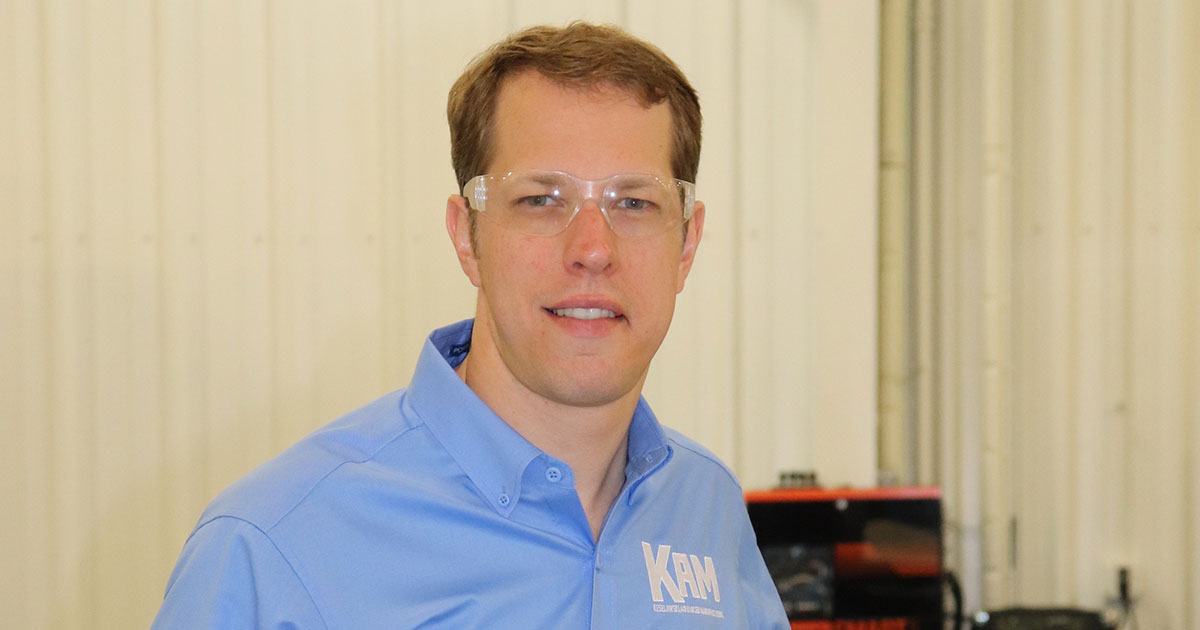NASCAR driver Brad Keselowski grew up in a racing family and, because of that, he also grew up in a car manufacturing family.
“What a lot of people don’t understand is in motor sports you have to build your own cars,” said Keselowski, who owns Keselowski Advanced Manufacturing. “We like to joke that we’re low-value car manufacturers.”
Keselowski learned early in life that being a good driver takes more than talent and strategy — it also requires having a fast car that doesn’t break down. Manufacturing tools have evolved over the years, allowing for better, faster cars. Today, Keselowski is a big fan of 3D printing and its growing potential, especially with metal printing solutions.
Additive manufacturing
3D printing is also known as additive manufacturing, which is the building of parts from the ground up, using powder or material as a filler. (Conversely, subtractive manufacturing begins with a large object that is whittled down into a specific part).
Injection molding has been a popular form of additive manufacturing but 3D printing has been making an impact in recent years, especially as the technology evolves and gets better. In 3D printing, you print by layers, with each layer becoming more defined until you have a finished product.
It’s not the fastest way to create, but 3D printing offers a lot of beneficial capabilities.
“The biggest thing it offers you is design freedom — because you’re printing it, you can build little cavities that can be used for fluid management,” Keselowski explained. Also, because you’re dealing with the materials in powder form, you can mix them and do things you couldn’t do in solid form, allowing the manufacturer to mix materials that normally wouldn’t go together to create super alloys or super materials.

3D printing also disrupts the supply chain.
“In subtractive manufacturing, you have to design tooling that holds the parts,” Keselowski said. “In 3D printing, you build from the ground up and you don’t need tooling.”
That allows you to circumvent the supply chain and it means the factory doesn’t need to have as much inventory on hand, since it can be printed on demand. The same goes for prototyping, where you can build one or two prototypes to see how the part works or fits.
“The advantages of 3D printing are growing as the costs go down and the ability to integrate into the supply chain and understanding the design,” Keselowski added.
3D printing spotlights industry 4.0
Additive manufacturing is making its greatest impact in three areas: motorsports, aerospace, and medical with bio-implants. While 3D printing is limited only by our imaginations and willingness to take risks, Keselowski says it complements — rather than competes with or replaces — other technologies entrenched in the manufacturing process.
CNC mills and castings are still going to be needed, as well as skilled professionals for those processes. However, integrating 3D printing will require new skill sets, particularly in computer programming, and should open new job opportunities.
“Printing is a very complicated algorithm, and the more you understand computer program, and algorithms, and geometry, the better you’ll be at 3D printing because of the very nature of printing layer by layer,” Keselowski said. “There are all kinds of different shapes and different programming techniques you need to understand to be very good at it.”
Having a future factory that understands and has the right mentality to embrace this type of technology is critical to its success because traditional manufacturing packages don’t work in additives. 3D printing needs industry 4.0 and, as Keselowski predicted, “The ones who embrace it are going to have a distinct advantage over those who have not.”
Sue Poremba, [email protected]



